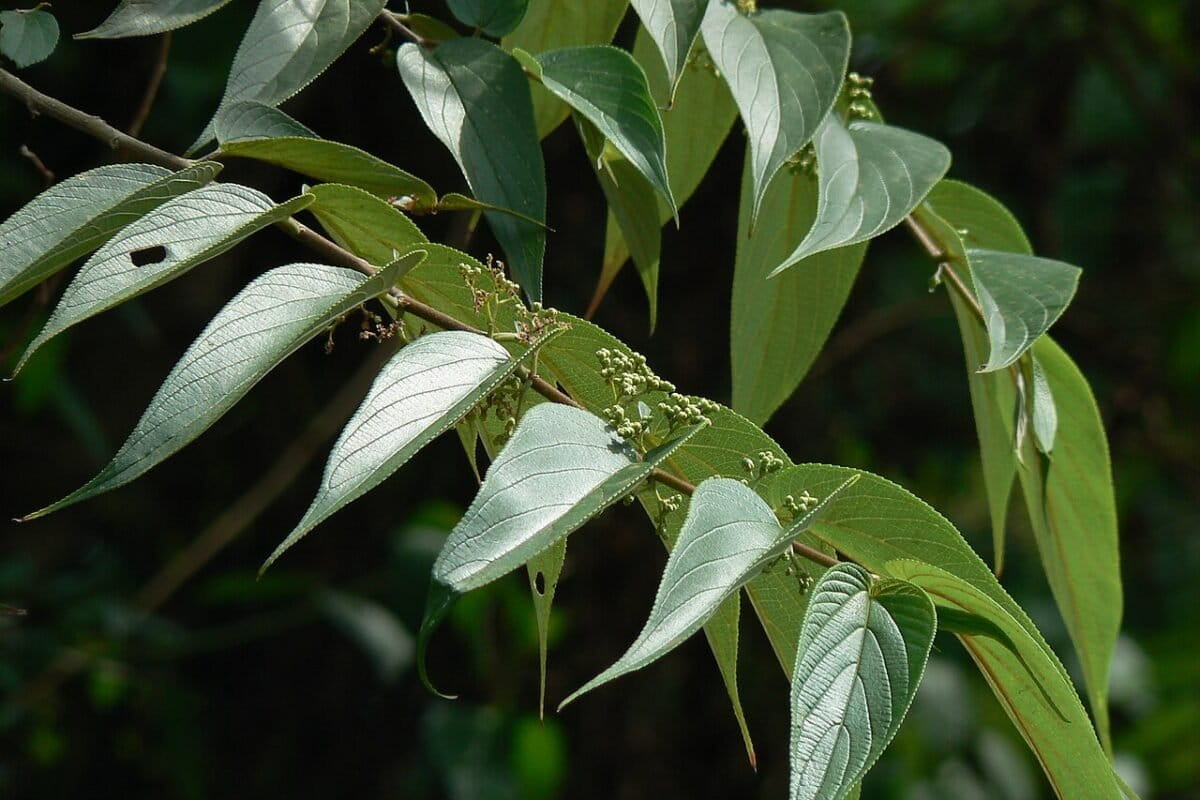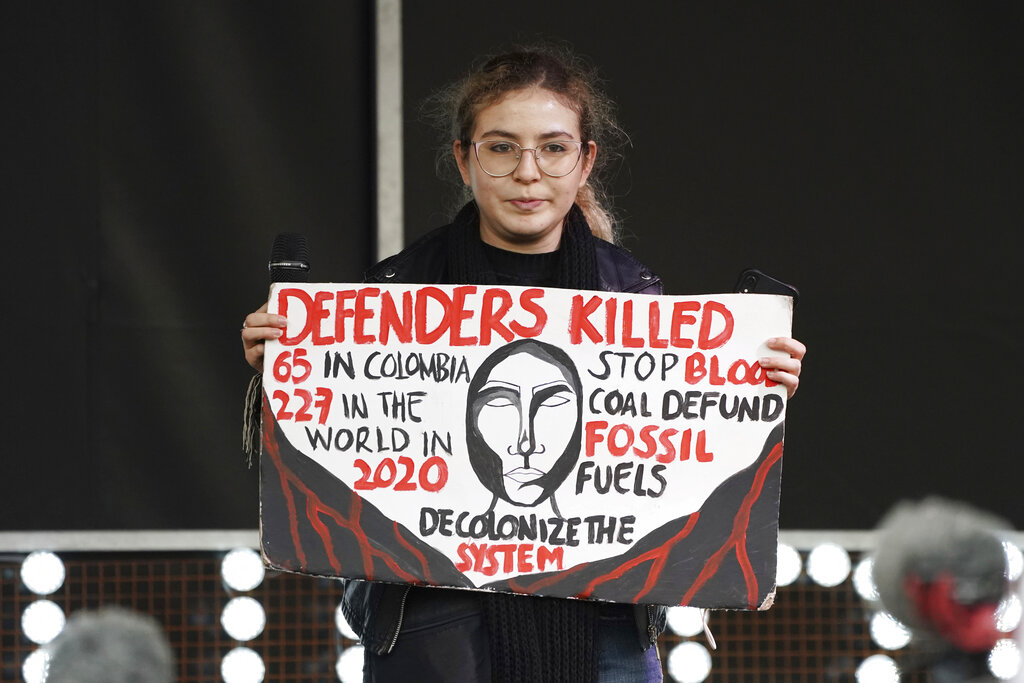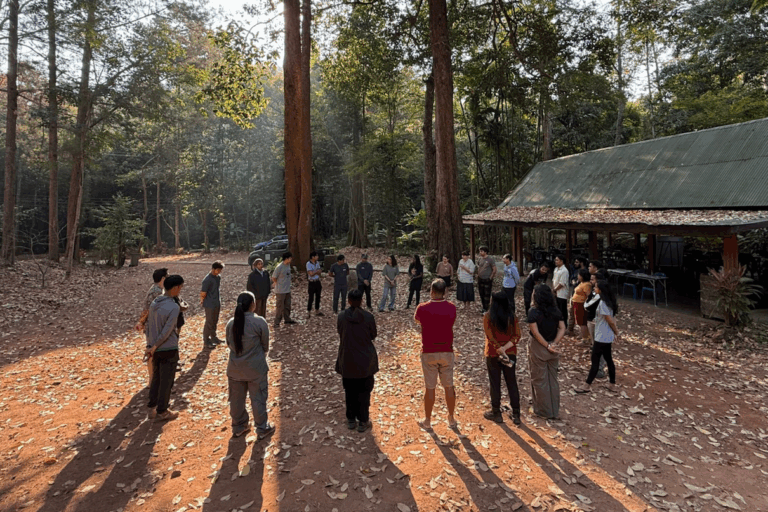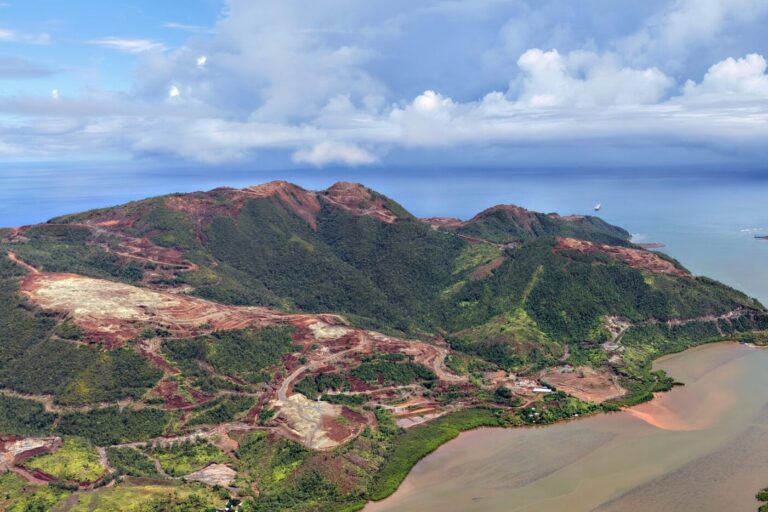- Across the Amazon, archaeological remains indicate that the human presence in the rainforest is much older, larger and more widespread than previously thought.
- Researchers in Brazil are lobbying to register archaeological sites as national monuments, which would confer a new layer of protection status to parts of the rainforest.
- Earthen mounds known as geoglyphs, for instance, have been revealed to stretch from Acre state north into neighboring Amazonas; formally recognizing them under Brazil’s heritage law could protect this vast swath of rainforest.
- “Today we know it’s highly likely that part of the forest has been changed by people,” said Dutch biologist Hans ter Steege, co-author of research that has shown there may be up to 24,000 earthworks hidden throughout the rainforest that could qualify for protection.
Our current understanding of the Amazon has greatly changed in recent years. Research has shown that the rainforest’s biodiversity and abundance are the product of both natural and human history, the result of people living there for at least 12,000 years. And it’s this last point that forms the basis for calls to protect the world’s greatest tropical rainforest not just as a natural treasure, but also as part of Brazil’s cultural heritage.
That’s the view espoused by Eduardo Neves, an archaeology professor at the University of São Paulo, in a recent interview with Brazilian news monthly Piaui. “The forests are our pyramids,” he said.
In a phone interview with Mongabay, Neves pressed the point: “We should use archaeological knowledge to help protect the Amazon ecosystem. By registering archaeological sites as national monuments, we want to keep the forest intact and allow the people living there to continue living there, as they offer the best possible protection against invaders.”
Neves is one of the leading Brazilian archaeologists attempting to unveil the history of past civilizations in the Amazon. He’s worked for more than 30 years in the central and southwestern Brazilian Amazon, and in 2022 published a book about his findings, Sob os tempos do equinócio: Oito mil anos de história na Amazônia central (“Under the times of the equinox: 8,000 years of history in the central Amazon”; there’s no English translation yet of the book).

Science has established that the natural and cultural aspects of the Amazon have long gone hand in hand. For example, Indigenous peoples enhanced soil fertility by adding a mix of charcoal, pottery shards, organic waste and manure to create a nutrient-rich soil known today as terra preta (dark earth) in which to grow crops and trees. For Neves, there’s every reason to conclude that at least part of the rainforest has been “manmade” and that “agricultural hotspots” once thrived beneath the canopy.
Before the work by Neves and other archeologists like Anna Roosevelt, it was long the dominant view that the rainforest was too hostile and infertile to support agriculture and therefore couldn’t have allowed human settlements to flourish. First formulated in the 1950s, the theory claimed that only small bands of hunter-gatherers could have survived in such an unforgiving environment.
Today we know better. From the garden cities of the Xingu River Basin, to the Stonehenge-like monoliths in what is today Amapá state, archaeological remains across the Amazon biome indicate that the human presence is much older, larger and more widespread than previously thought. It is a trend that goes beyond the Brazilian portion of the Amazon.
In Ecuador, a team led by French archaeologist Stéphen Rostain earlier this year showed using the laser-based surveying method lidar that a pre-Columbian civilization in the Upano Valley on the western edge of Amazon consisted of some 6,000 earthen platforms surrounded by farmland, canals, drainage works and roads — covering an area much larger than previously thought.
In 2022, Neves launched the project Amazônia Revelada (Amazon Revealed), which uses lidar to further reveal and map the Amazon’s hidden past.

“From activists to archaeologists, the project currently consists of some 20 people,” Neves said of the initiative, funded by a $1.8 million grant from the National Geographic Society.
Neves and his collaborators have been holding talks with representatives of the communities living in the places where there’s evidence of archaeological sites, to find out whether they want them to be mapped.
“After talking to the representatives of the Indigenous communities to seek their consent, we have flown over parts of Rondônia [state], Marajó [Island] and Pará [state] to scan for earthworks,” he said. “And we are finding them even in places where we didn’t expect to find any.”
While the project’s final results will only be presented in mid-2025, one thing Amazônia Revelada has revealed is that the geoglyphs found in the Brazilian state of Acre reach much further north than previously thought, well into the southern part of the neighboring state of Amazonas.
Geoglyphs are earthen structures made of low walls and ditches representing geometrical shapes and figures, which arguably held ritual and religious meanings for the Indigenous peoples who constructed them between 1,000 B.C.E. and 1,000 C.E.
The geoglyphs of Acre have long been nominated to be listed as a national monument. Neves’s research now shows that such a designation, when acknowledged, should be extended well into Amazonas.

Monuments
Brazil’s main piece of legislation dealing with national heritage is a law from 1961, which prescribes hefty fines or a prison sentence for the crime of damaging or destroying “archaeological or prehistoric monuments.” This legal protection can and be extended to the archaeological sites in the Amazon, according to Leonardo Troiano, the cooperation and promotion coordinator at the government’s National Historic and Artistic Heritage Institute (IPHAN).
“The legal framework to protect the Amazon’s archaeological past is fully in place,” Troiano told Mongabay. “We don’t need any new regulation in that regard.”
Part of the Ministry of Culture, IPHAN is an autonomous institute that plays a central role in safeguarding Brazil’s cultural heritage, tasked with inspecting, preserving and protecting it.
The 1961 law explicitly states that the responsibility for protecting and maintaining archaeological and prehistoric monuments lies with the state, even those found on or beneath privately owned land.
The biggest benefit of being recognized as a national monument is that anyone who damages or steals parts of it can be criminally prosecuted.
But to date, Brazil has recognized and registered just 39 national monuments in the northern Amazon, out of more than 2,000 nationally. Of these, most are related to structures dating back to the Portuguese colonial rule, such as forts, churches and urban centers. The Zoobotanical Park of the Emilio Goeldi Museum in Belém, capital of Pará state, is an exception.
According to Troiano, many of the some 400 geoglyphs in Acre, which were only discovered at the turn of the 21st century, have been damaged or destroyed by farmers who continue to expand into the rainforest.

“Here you have the problem,” he said. “In theory, yes, we must protect [them]. In reality, it’s not that simple. There is a war out there. People are fighting over land. As an environmentalist or an archaeologist, you are stepping into a minefield. A farmer who cleared the land from all vegetation to grow soy wants to make money. Any artifacts found on his land that could point to an Indigenous past will only complicate his life.”
When artifacts are found on Indigenous land or land regarded as sacred by Indigenous people, another issue of ownership comes into play.
“You can’t just take what you found and put it in a museum,” Troiano said. “You must talk to the people involved and negotiate a compromise, so scientists can study the objects and perhaps later display them in a local museum.”
Revealing the Amazon
Research by Dutch ecological biologist Hans ter Steege, a professor at the University of Utrecht, in 2013 showed that the Amazon region is home to some 16,000 tree species. Despite this diversity, just 227 account for half the total number of trees. This, again, points to the human hand.
“Today we know it’s highly likely that part of the forest has been changed by people,” Ter Steege told Mongabay. “In certain parts of Bolivia, more than half the trees are so-called domesticated trees.”
However, this kind of landscaping is generally not enough to be protected as cultural heritage. Brazil’s 1961 heritage law defines archaeological or prehistoric monuments as any physical remains that bear witness to Paleo-Indian culture, such as burial pits, mounds, traces of occupation, cemeteries, pottery, utensils, or rock inscriptions.
In October 2023, Ter Steege was one of the more than 200 co-authors of a survey published in the journal Science. Analyzing lidar data from 2008 to 2018, they discovered 24 previously undetected precolonial earthworks indicating human habitation.
These are the kinds of cultural and historical traces of the forest Neves is referring to. While many have been uncovered in recent years, it’s highly likely that many more remain hidden — for now, at least.
The research published in Science only covered 5,315 square kilometers (2,000 square miles), about 0.1% of the Amazon Basin’s total area. The authors estimated there may still remain some 10,000 to nearly 24,000 earthworks hidden beneath the rest of the rainforest’s canopy.
“It’s thought that most are located in the southwest of the Amazon,” Ter Steege said. “People have influenced the forest, but not everywhere in an equal manner.”

Another effort to protect the rainforest as a monument would be getting the Amazon, or parts of it, recognized as a UNESCO World Heritage Site and conferred on sites with cultural, historical, natural or scientific features of an outstanding universal value.
There are already 24 World Heritage Sites in Brazil, four of which are found in the Amazon region, all of them protected natural sites. Outside the Amazon, Serra de Capivara National Park in the northeastern state of Piauí is an example of a site recognized for its cultural and historical value, boasting rock paintings dating back some 25,000 years.
“Often these categories overlap,” Troiano said. “Take the rock art found in Monte Alegre [not a World Heritage Site] in the Amazon. Dating back some 12,000 years, its value is not just the ancient drawings. There is the cave, which is a natural feature, once used for habitation. The cave offered shelter and close proximity to lakes and forests. It’s all interconnected. Monte Alegre is a cultural site within a great natural setting.”
On July 26, 2024, the dune landscape of Lençóis Maranhenses National Park on the eastern coast of Maranhão state, which isn’t in the Amazon, was the latest Brazilian site to receive World Heritage status. Another 22, among them Acre’s geoglyphs and Pico da Neblina, Brazil’s highest peak, in the state of Amazonas, have been nominated.
Obtaining the status of World Heritage Site is mainly beneficial in terms of international exposure. But it doesn’t confer any additional protection; UNESCO, as a U.N. agency, can’t ensure or enforce protection, which is the responsibility of national authorities. It can also take many years before a nomination is formally approved. Acre’s geoglyphs were nominated in 2015, and Pico de Neblina in 1996. For sites as threatened as the Amazonians, there’s very little time to act, Neves said.
“We are seeing 12,000 years of landscaping being destroyed by 30 years of deforestation to raise cattle and grow soy,” he said. “We urgently need an extra layer of protection with the help of archaeology.”
Banner image:Ancient drawings known as geoglyphs found in the state of Acre. Image courtesy of Diego Gurgel/Secom.
‘Many features of the Amazon are man-made’: Q&A with archaeologist Eduardo Neves
A short walk through Amazon time: Interview with archaeologist Anna Roosevelt
Citations
Rostain, S., Dorison, A., De Saulieu, G., Prümers, H., Le Pennec, J., Mejía Mejía, F., … Descola, P. (2024). Two thousand years of garden urbanism in the upper Amazon. Science, 383(6679), 183-189. doi:10.1126/science.adi6317
Ter Steege, H., Pitman, N. C., Sabatier, D., Baraloto, C., Salomão, R. P., Guevara, J. E., … Silman, M. R. (2013). Hyperdominance in the Amazonian tree flora. Science, 342(6156), 1243092. doi:10.1126/science.1243092
Peripato, V., Levis, C., Moreira, G. A., Gamerman, D., Ter Steege, H., Pitman, N. C., … Aragão, L. E. (2023). More than 10,000 pre-Columbian earthworks are still hidden throughout Amazonia. Science, 382(6666), 103-109. doi:10.1126/science.ade2541
FEEDBACK: Use this form to send a message to the author of this post. If you want to post a public comment, you can do that at the bottom of the page.














